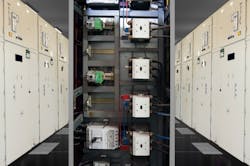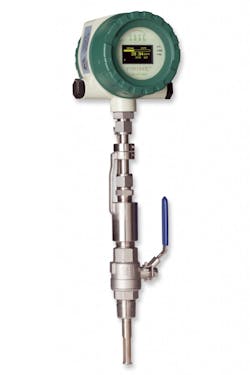With the launch of ISO 50001, industrial plants, commercial and institutional facilities, and governmental agencies are executing continual energy management systems designed to increase energy efficiency. The ISO standards require a facility to adopt an energy policy and follow a four-step process to implement change while continuously monitoring to enhance the activity.
Superior Energy Performance (SEP) is the U.S. certification program directed by the Department of Energy with the directive of certifying increased energy productivity under ISO 50001. According to SEP, the first certified facilities are reporting significant energy reduction and savings with payback periods from four months to two years. The programs require facilities to monitor energy usage, which requires flow meters in energy management systems. Many influential companies with worldwide holdings have adopted and benefited from energy management systems and are setting the standard. With mounting interest from large organizations and governments taking steps toward combating climate change, the demand for energy management systems in industrial process organizations is rising.
What is ISO 50001?
An insertion-style flow meter with the valve assembly
ISO 50001 is a voluntary international standard aimed at helping organizations use energy more efficiently. Its model provides management strategies through an energy management system for companies in all sectors. The group defines an energy management system as a "set of interrelated or interacting elements to establish an energy policy and energy objectives, and processes and procedures to achieve those objectives."¹ ISO launched the platform in June 2011.
Its primary objective is to improve energy-related processes and efficiency. Improving efficiency, of course, saves money and helps improve the environment by reducing greenhouse gases.
The systems establish a model for industrial plants, governmental agencies, and commercial and institutional facilities, providing a template as a framework for pursuing their goals. The strategies serve small and large organizations, publicly and privately owned all over the world.
ISO 50001 can easily be integrated with existing ISO management standards in industrial process organizations, such as ISO 9001 and 14001, and its procedure is based on a continual improvement management system used in these other standards. The process follows a four-step model, "plan-do-check-act," to carry out change while continuously monitoring to improve the process.
Other ISO standards and SEP
ISO 9000 is a group of recognized standards that helps organizations guarantee that their products and services consistently satisfy customers’ requirements while continuously improving the quality. ISO 9001 requires that all devices used in measuring or monitoring processes be maintained and calibrated routinely as determined by engineering.
ISO 14000 is a collection of standards that helps companies minimize their environmental influence. ISO 14001:2004 and ISO 14004:2004 incorporate environmental management systems.
ISO 50001 certification is not required in the U.S., but many industrial organizations have implemented it through SEP programs. SEP is the certification program directed by the U.S. Department of Energy with the directive of certifying increased energy productivity under ISO 50001. Multiple facilities implemented SEP energy management systems before the 50001 approval, but now the SEP program requires ISO 50001 implementation and certification.
According to SEP, the first SEP-certified facilities have achieved:
- On average, a 10 percent reduction in energy costs within 18 months of implementation
- Annual savings of $87,000 to $984,000 using no- or low-cost operational measures
- Returns of one year or less in facilities with energy costs exceeding $3 million annually, while those with energy costs of $1.5 to $3 million benefited in less than two years
The role of flow meters
SEP certification requires that facilities "meter, monitor and record energy consumption data for identified significant energy uses (SEUs), as well as the facility as a whole. In most cases, the establishment used utility revenue meters along with a mix of preinstalled and new sub meters for their SEUs."²
Various types of flow meters may be used in energy management systems, depending on the medium being measured. The primary fluids of interest in a process facility are water, steam and natural gas. Also, considerable consumption of compressed air can, in some cases, be a significant draw on electrical power.
Thermal mass flow meters are used in energy management functions in combustion control, natural gas utilization, compressed air monitoring, and energy audits and monitoring. These applications impact industrial operations including aluminum and steel, textile, glass manufacturing, automotive, food and beverage, pulp and paper, power, chemical, and refining. They are also found in many light-duty industrial and commercial operations such as universities, hospitals and building complexes.
The thermal mass flow meter measures natural gas consumption at different parts of the facility and individual combustion sources. It also measures compressed air and helps determine and monitor compressed air leakage. Additionally, energy monitoring specialists may use portable thermal mass flow meters when performing energy management audits or checking flow rates in pipes. Many thermal flow meters comply with the calibration requirements within ISO 9001.
Looking to the future
Since several influential corporations such as 3M Co., Coca-Cola and Dow Chemical have global interests, adopting ISO 50001 is quickly becoming a necessity to remain competitive.
Today, most energy still comes from fossil fuels such as petroleum and coal. These resources are nonrenewable, and companies have a responsibility to use them wisely.
In process facilities, energy management systems target the optimization of process control. By integrating improved instrumentation and control systems, product quality can be enhanced and production efficiency increased, thus reducing energy requirements.
Lastly, climate change is a hot topic among world leaders. Documentation shows temperatures have risen, extreme weather has increased, and significant public health threats have been associated with extreme weather. Strategies to reduce carbon pollution, the most noteworthy influence on climate change, are continually explored, recommended and even mandated.
The current U.S. administration has identified energy efficiency in businesses and factories as a priority, with a goal to cut energy waste and increase productivity by 2030. The recent adoption of the U.S Clean Power Plan is indicative of the mounting interest in combating climate change and countering its triggers.
Conclusion
While ISO 50001 provides voluntary standards for industrial process organizations interested in using energy management systems, the standards are becoming expectations. Some companies will find that to remain competitive, they must adopt these energy management strategies. As world leaders and governmental agencies continue to mandate strategies to counter climate change, adopting energy management systems will become even more important.
References
- A Look at Energy Management at Subaru of Indiana Automotive. From www.energymanagertoday.com/a-look-at-energy-management-at-subaru-of-indiana-automotive-092140/
- ISO 50001:2011(en) Energy management systems — Requirements with guidance for use. From www.iso.org/obp/ui/#iso:std:iso:50001:ed-1:v1:en
Wayne Shannon is the marketing manager for Sage Metering. He has more than 20 years of experience in the sales and marketing of thermal dispersion mass flow meters and switches. He has a B.S. in chemical engineering from the University of New Mexico in Albuquerque and an MBA in marketing from Golden Gate University in San Francisco. He may be reached at [email protected] or 866-677-7243.




